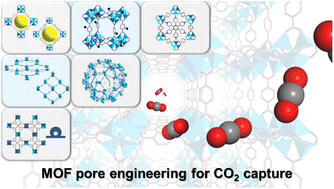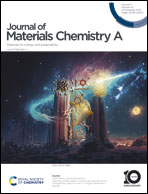Pore engineering of metal–organic frameworks for boosting low-pressure CO2 capture
Abstract
Long-term carbon accumulation is a leading cause of global climate change. Carbon dioxide (CO2) capture and storage (CCS) using porous materials is a versatile pathway capable of achieving carbon neutrality from the viewpoint of sustainability. As inherently crystalline and porous solids, metal–organic frameworks (MOFs) offer huge potential for CCS due to their charming features, including, but not limited to ultrahigh surface area and tailorable pore geometries. Effective pore engineering of MOFs promises enhanced adsorption capacity, selectivity, and stability in the field of CCS. Here, we describe the recent research progress in MOF pore engineering for CO2 capture, especially at relatively low pressures, in a rational manner. The advances in the pore engineering of MOFs are briefly overviewed first. Afterwards, we highlight cases of MOF pore engineering to control their characteristics including pore size, surface chemistry, polarity, hydrophobicity, and flexibility for boosting low-pressure CO2 adsorption. Several challenges with the corresponding recommendations are also discussed, which will hopefully facilitate the future development of this field.

- This article is part of the themed collection: Journal of Materials Chemistry A Recent Review Articles


 Please wait while we load your content...
Please wait while we load your content...